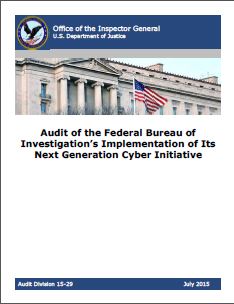Dear Mr. Trump: To ‘Cyber’ Better, Try the Blockchain (Wired): Among the many pieces predicting what cyber may look like in the next administration, one particular piece keyed in on one technology that President-elect Trump should focus on. The article recommends that Trump utilize blockchain to shore up cyber instead of the traditional perimeter model for security. The comment from Wired explains just how different each model works, with the key difference being that current models attempt to exclude unwanted individuals, while blockchain, as explained below, is a completely open network. The author reports that the most popular blockchain network, bitcoin, has never been hacked. The report also investigates banks’ use of blockchain, and some other popular networks. The full text of the suggestion for the Trump administration can be found here.
Blockchain for Dummies
In reading the above piece, those of us who are not tech experts might be wondering what blockchain is. The following is an attempt to sum it up in a While certainly not a consensus opinion, there are those who believe the technology could be revolutionary. It’s not super exciting, but many of the biggest transformations in businesses were not. Supporters of liberalism and free market ideology love the decentralized trust system. Not only can it change how businesses and customers interact, but one commentator claims it is as innovative as limited liability, property rights, and even the internet itself. Is blockchain going to be that much of a game changer? Probably not. But it shows enough promise to spark a discussion of that nature.
In order to properly understand the benefits of blockchain, it is important to understand the problem that it was attempting to solve. Without getting into too many details, the core problem was double-spending. Through a couple of different methods, it was possible for a user on the internet to spend the same coin twice. One analogy that has been used to explain the problem is a simple bank transaction. When you move money in a bank transaction, it is usually done all electronically. There is no physical exchange of paper between individuals. This system only works is because the banks can be trusted. There was a need for a way to secure transactions on the internet. Blockchains eventually provided the answer.
Before blockchains, there is a smaller piece of data known as a hash, and hashchains. A hash is a piece of data of any size that is standardized into a specific length. Hashchains are separate data chunks linked together by a singular hash function. The crucial characteristic of hashchains is that if you modify one piece of data, every piece in the chain is altered. Blockchain is just an organization of hashchains within hashchains, hence the “block.” When a new block is created, the older hashchain is internalized and cannot be modified.
Every modification that occurs to a chain is recorded and must be approved. The difference from the bank scenario, however, is that there is no central authority. The approval comes from nodes all over a network that run algorithms to verify the transaction. This network could be the entire internet, or a smaller group of approved computers. Instead of putting the trust in a single organization like a bank, the approval process is distributed across the entire online ledger, the blockchain. This distributed ledger is what makes blockchain unique. The database of transactions is shared and synchronized across the entire network—between thousands of millions of people, computers, networks, and nations. Everything is public, which makes it extremely difficult to manipulate. Anyone with access to a node of the network has access to the entire system of records. A simplified diagram of a transaction on a blockchain network can be seen below.

(1): Person A initiates a transaction and includes digital signature inside transaction. (2) Transaction is sent to miner. Miner is one type of verifier that verifies all transaction of connected nodes. (3) Miner broadcasts transaction as block to all connected nodes if transaction is valid. (4) Node inside network accepts block if all transaction inside it are valid and not already spent. After ownership of block inside network and transaction is transferred into target account inside block is sent to person B. (5) Person B gets money (digital currency). (via http://blog.ifourtechnolab.com/post/2016/10/04/blockchain-a-forward-step-to-secure-transaction).
The most functional application of blockchain has been through Bitcoin as discussed above. Bitcoin was first proposed in a 2008 paper by Satoshi Nakamoto, who is either an individual or group of people operating under that pen name. The transactions occur directly from user to user, with the verification process described above by nodes and recording in the blockchain ledger for public viewing. In order for a transaction to be valid, a user must digitally sign it, showing they have valid ownership of the coins. Without a signature and proof of ownership, the bitcoins will be rendered useless. The blockchain ledger exists on tens of thousands of computers across the world. Any attempt to edit a transaction is useless, as any discrepancy can easily be sorted out. The word of one cannot outweigh the very public records that thousands of people throughout the world all have access to.
While Bitcoin has grown steadily, it has certainly had its ups and downs. Bitcoin has failed to gain momentum in retail transactions. Criminals have utilized it much more recently, and it has also been used frequently on the black market. Different countries have classified bitcoin differently, and its legal status remains up in the air. Some legal analysts have suggested bitcoin could be outlawed.
The general consensus seems to be that bitcoin likely will not blossom to the point that some may have hoped or anticipated. The underlying theory, though, of blockchain, has garnered significant interest. Both private sector investors as well as governments have started to realize the potential that blockchain has for other applications besides simply financial transactions. One UK official mentioned the possibility that the distributed ledger would be ideal for monitoring autonomous vehicles as they become more popular. Another company has utilized blockchain to cut out middlemen and allow customers to register their diamonds. This establishes a record of the true owner and allows for a significant reduction in insurance fraud. Blockchain allows for legitimization and authentication. Another hypothetical application that was proposed is in property titles. Blockchain not only offers financial security and could add billions to the global economy, but most importantly it offers trust.
Of course, like everything in the world and especially when it comes to the internet, blockchain is not without downsides. First of all, the system is entirely depending on storing massive amounts of data, so you need the space for storage. Increasingly in recent times, we have seen more and more how easily hackers have gained access to sensitive information. To date, there has been no indication of any major breaches of Bitcoin or similar programs. But the more use blockchain gets, the more of a high value target it becomes. It is also expensive, as those who verify the transaction charge to do so. Aside from the financial cost, the transactions and verification also take time.
While blockchain may not be proven enough yet to be applied on the scale as the author suggests, President Trump may find some value in exploring how blockchain could be utilized to better secure U.S. networks and infrastructure.






2 Pingbacks